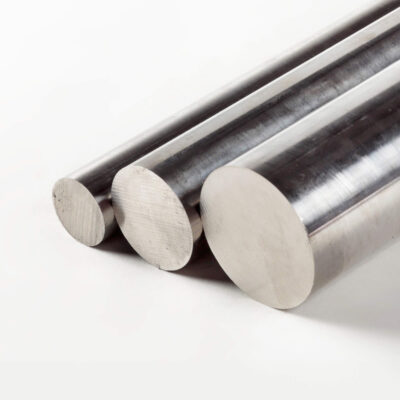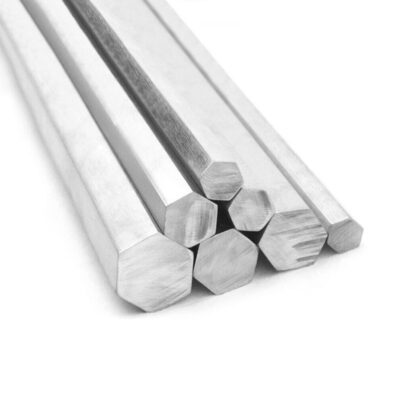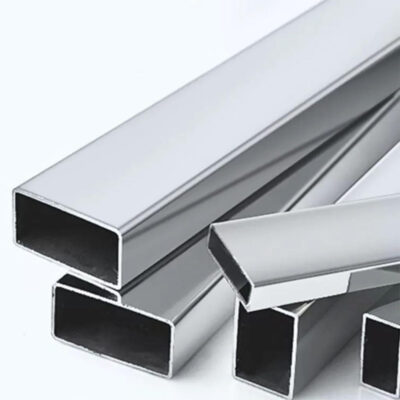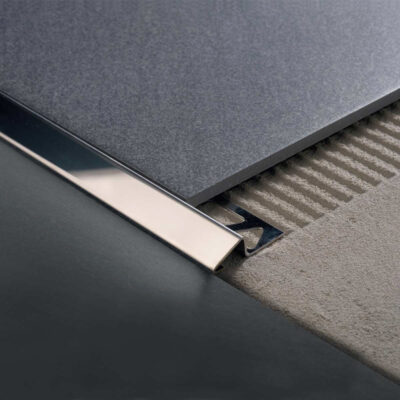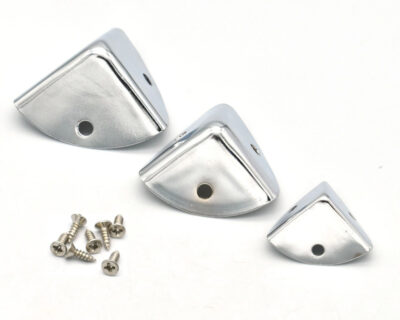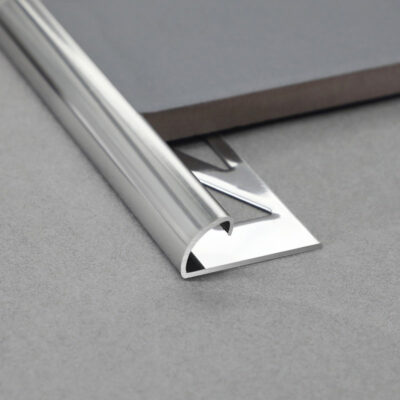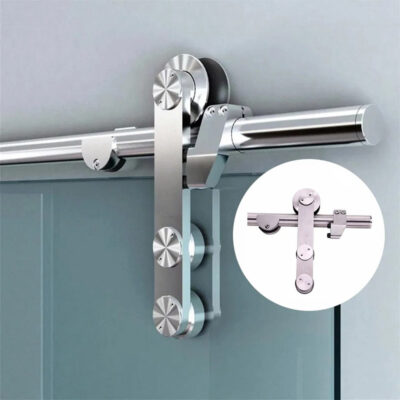The Critical Role of Stainless Steel in Aerospace Applications
When we discuss the materials that literally hold our aerospace industry together, few substances deserve more attention than aerospace stainless steel. During my recent tour of a leading aerospace manufacturing facility, I was struck by something the chief metallurgist said: “In an industry where failure isn’t an option, stainless steel remains our most trusted ally.” This statement encapsulates why, despite numerous material innovations over decades, stainless steel continues to be fundamental to aviation and space exploration.
Aerospace stainless steel isn’t simply ordinary stainless steel repurposed for aircraft. It represents a specialized category of alloys engineered to withstand extraordinary conditions while maintaining structural integrity. These specialized alloys face temperature extremes ranging from the cryogenic cold of high altitudes to the intense heat generated by jet engines and atmospheric re-entry. They must resist corrosion from aviation fuels, hydraulic fluids, and environmental exposure while maintaining their mechanical properties under constant stress and vibration.
The evolution of these specialized steels parallels the history of flight itself. Early aircraft designers quickly discovered that standard materials couldn’t withstand the unique stresses of aviation. This led to the development of increasingly specialized stainless steel formulations. E-Sang and other pioneering materials companies have played crucial roles in advancing these specialized alloys, understanding that aerospace applications require extraordinary attention to composition, manufacturing processes, and quality control.
What makes aerospace stainless steel truly remarkable is its versatility. It serves critical functions in virtually every aircraft system—from engine components and hydraulic lines to structural elements and fasteners. This versatility stems from its unique combination of properties: exceptional strength-to-weight ratio, thermal stability, corrosion resistance, and mechanical reliability.
Today’s aerospace industry faces mounting pressure to reduce weight while maintaining or improving safety margins. Yet even as composite materials gain prominence, stainless steel remains irreplaceable for many applications. Its reliability under extreme conditions provides engineers with confidence that systems will perform as designed throughout an aircraft’s operational life.
Understanding Aerospace-Grade Stainless Steel Compositions
Aerospace stainless steel isn’t a single material but a family of specialized alloys, each engineered for specific applications and performance characteristics. The composition of these alloys is precisely controlled, often to tolerances measured in hundredths of a percent—a level of precision that would be unnecessary in most other industries but is critical for aviation safety.
The most common aerospace stainless steels fall into several categories, primarily austenitic, precipitation-hardening, and martensitic grades. Each category offers distinct advantages depending on the application requirements. Austenitic stainless steels like 304 and 316 grades provide excellent corrosion resistance and formability, making them suitable for aircraft components exposed to moisture and atmospheric conditions. However, for aerospace applications, these standard grades are often modified with tighter composition controls and additional testing.
Precipitation-hardening stainless steels, particularly grades like 17-4PH, 15-5PH, and PH 13-8 Mo, deserve special attention. These remarkable alloys combine corrosion resistance with exceptionally high strength achieved through specialized heat treatment processes. During a failure analysis project I conducted on landing gear components, we found that properly heat-treated 17-4PH maintained its properties even after thousands of stress cycles—an impressive demonstration of its reliability for critical applications.
What truly sets aerospace grades apart from their commercial counterparts is the strict control of trace elements. Dr. Elena Rodriguez, a metallurgist specializing in high-performance alloys, explained to me that “even minute variations in elements like sulfur or phosphorus can dramatically impact the performance of stainless steel in aerospace applications. The difference between a safe flight and a catastrophic failure might come down to parts per million in composition.”
The table below highlights key aerospace stainless steel grades and their typical applications:
| Grade | Classification | Key Properties | Typical Aerospace Applications |
|---|---|---|---|
| 15-5PH | Precipitation Hardening | High strength, good corrosion resistance, excellent toughness | Landing gear components, actuator fittings, fasteners |
| 17-4PH | Precipitation Hardening | Excellent combination of strength and corrosion resistance | Structural components, gears, shafts, fasteners requiring high strength |
| 321 | Austenitic | Excellent high-temperature resistance, stabilized against sensitization | Exhaust systems, engine components, firewalls |
| 347 | Austenitic | Superior creep resistance at elevated temperatures | Jet engine components, exhaust manifolds, high-temp structural parts |
| Custom 455 | Precipitation Hardening | Ultra-high strength, good corrosion resistance | Critical structural components, landing gear, actuator parts |
| 13-8 Mo | Precipitation Hardening | Superior toughness, excellent resistance to stress corrosion cracking | Flight-critical fasteners, structural components in corrosive environments |
Beyond these standard grades, aerospace manufacturers increasingly work with materials suppliers to develop proprietary formulations for specific applications. These custom alloys often contain precise additions of elements like nitrogen, molybdenum, or niobium to enhance specific properties like strength at cryogenic temperatures or resistance to specific types of corrosion.
The exacting nature of aerospace applications means that material certification and traceability are as important as the composition itself. Every batch of aerospace stainless steel must be accompanied by comprehensive documentation regarding its chemical composition, processing history, and test results—creating an unbroken chain of verification from melt to final component.
Performance Under Extreme Conditions: Testing and Standards
The phrase “aerospace-grade” isn’t just marketing—it represents a comprehensive suite of testing and certification requirements that push materials to their limits. During my visit to an aerospace materials testing facility last year, I witnessed firsthand the punishing regimen these alloys must endure before being approved for flight. The testing engineer’s comment stayed with me: “We don’t just test until we find success; we test until we understand exactly where and how failure occurs.”
Temperature performance represents perhaps the most demanding aspect of aerospace stainless steel testing. These materials must maintain their properties across an extraordinary range—from the -65°F (-54°C) encountered at high altitudes to well over 1000°F (538°C) in engine components. What’s particularly challenging is that different properties degrade at different rates as temperatures change. Tensile strength, fatigue resistance, and corrosion behavior all evolve with temperature in complex ways.
Corrosion testing for aerospace stainless steel goes far beyond the salt spray tests used for commercial applications. These alloys must resist not only atmospheric corrosion but also the effects of hydraulic fluids, de-icing solutions, jet fuels, and cleaning chemicals. Stress corrosion cracking—a particularly insidious failure mechanism where mechanical stress and corrosive environments combine—receives special scrutiny. I recall examining a failed component where a seemingly minor residual stress combined with an unexpected environmental exposure led to catastrophic failure in service.
Mechanical property testing for aerospace applications is equally rigorous. Beyond standard tensile and yield strength measurements, these alloys undergo extensive fatigue testing, often for millions of cycles to replicate the stresses of repeated takeoffs, landings, and pressurization cycles. Fracture toughness testing assesses resistance to crack propagation, while creep testing evaluates how materials perform under sustained loads at elevated temperatures.
The aerospace industry operates under a complex framework of standards and specifications. The primary authorities include:
- Aerospace Material Specifications (AMS) issued by SAE International
- American Society for Testing and Materials (ASTM) standards
- Military specifications (MIL-SPEC)
- Original Equipment Manufacturer (OEM) proprietary specifications
These standards don’t just set minimum property values; they dictate testing methodologies, inspection requirements, and documentation practices. According to aerospace materials specialist Dr. James Chen, “The rigor of aerospace standards reflects a fundamental principle: we must understand not just the typical performance of these materials but their worst-case performance under the most adverse conditions they might encounter.”
The following table illustrates typical performance requirements for aerospace stainless steels compared to commercial grades:
| Property | Commercial Grade Requirement | Aerospace Grade Requirement | Testing Method |
|---|---|---|---|
| Tensile Strength | Single test value above minimum | Statistical process control with tighter tolerances | ASTM E8, multiple test specimens |
| Corrosion Resistance | Basic salt spray testing | Multiple environment testing including aviation fluids | ASTM B117, ASTM G48, proprietary methods |
| Grain Size Control | Basic requirements | Tight control with metallographic verification | ASTM E112, specialized methods |
| Inclusion Content | Basic requirements | Stringent limits, often requiring specialized melting | ASTM E45, ultrasonic testing |
| Surface Finish | Visual inspection | Quantitative measurement, stringent roughness limits | ASTM A480, profilometry |
| Heat Treatment | Process verification | Process certification plus destructive testing | AMS 2759, proprietary methods |
What’s particularly challenging for manufacturers is that these requirements aren’t static—they continuously evolve as aircraft designs push boundaries and as our understanding of materials science advances. The certification of new aerospace materials can take years and cost millions of dollars, which explains why proven materials like well-characterized stainless steels remain attractive despite the emergence of newer alternatives.
Manufacturing Processes for Aerospace Stainless Steel
The journey from raw materials to flight-ready aerospace stainless steel components involves specialized manufacturing processes that would be unrecognizable to those familiar only with standard steel production. During a consulting project with a major aerospace supplier, I gained rare access to their end-to-end production line. The precision and attention to detail were remarkable—every step designed to eliminate variability and ensure material integrity.
The production of aerospace stainless steel typically begins with vacuum induction melting (VIM), a process that removes unwanted gases and provides precise control over alloy composition. For the most critical applications, this is often followed by vacuum arc remelting (VAR) or electroslag remelting (ESR) to further refine the microstructure and remove inclusions. These additional melting steps significantly increase cost but dramatically improve material homogeneity and performance predictability.
The sophistication continues with the forming processes. While commercial stainless steel may be processed using standard rolling or forging techniques, aerospace grades often require specialized approaches. Aerospace component manufacturer Sarah Williams explained to me that “standard forming methods can introduce unpredictable residual stresses or microstructural variations. For flight-critical parts, we need forming processes that maintain material integrity throughout the component.”
Heat treatment represents another critical and highly controlled manufacturing step. Precipitation hardening stainless steels, which are common in aerospace applications, derive their extraordinary strength from precisely controlled heating and cooling cycles. These heat treatments must be performed in calibrated furnaces with temperature uniformity often controlled to within ±5°F—tighter than many laboratory processes. What surprised me during facility visits was learning that some critical components undergo multiple verification tests between heat treatment steps, with full traceability of time-temperature profiles maintained for each batch.
Surface treatments add another dimension to aerospace stainless steel manufacturing. While commercial applications might focus primarily on appearance, aerospace applications require surfaces engineered for specific functional properties:
| Surface Treatment | Purpose | Applications in Aerospace |
|---|---|---|
| Passivation | Enhances corrosion resistance by removing free iron and forming chromium oxide layer | Hydraulic systems, exposed structural components |
| Shot Peening | Induces compressive surface stresses to improve fatigue life | Landing gear components, engine mounts, highly stressed fittings |
| Low-Temperature Nitriding | Improves surface hardness without compromising corrosion resistance | Bearings, actuator components, wear surfaces |
| Electropolishing | Removes surface irregularities that could initiate cracks | Highly stressed components, parts subject to fatigue loading |
| Specialized Coatings | Provides additional corrosion protection, reduces friction, or creates thermal barriers | Engine components, fasteners, control surface mechanisms |
Quality assurance for aerospace stainless steel extends far beyond what most industries would consider thorough inspection. Non-destructive testing methods including ultrasonic, radiographic, dye penetrant, and eddy current testing are routinely employed. Statistical process control tracks variations in multiple parameters, identifying potential issues before they affect final products.
The manufacturing complexity extends to joining and assembly methods. Welding aerospace stainless steel requires extraordinary precision and control, with certified welders following qualified procedures. During a failure analysis case, I encountered a situation where a seemingly minor deviation in welding parameters created a heat-affected zone with significantly altered properties—highlighting why such strict controls are necessary.
This manufacturing rigor translates directly to reliability. As one veteran aerospace engineer told me, “When lives depend on material performance, you can’t afford to take shortcuts. The extra cost of aerospace-grade manufacturing processes is insignificant compared to the consequences of material failure.”
Critical Applications in Modern Aircraft and Spacecraft
The prevalence of aerospace stainless steel becomes apparent when examining modern aircraft and spacecraft systems in detail. During a recent technical exchange with a leading aircraft manufacturer, I gained access to their material selection database. The breadth of aerospace stainless steel applications was striking—from massive structural members to tiny fasteners, each application leveraging specific advantages of these versatile alloys.
Engine components represent perhaps the most demanding application for aerospace stainless steel. Modern jet engines operate at extreme temperatures while subjected to enormous mechanical stresses and potentially corrosive combustion products. Stainless steel alloys like 321 and 347 play crucial roles in exhaust systems, compressor components, and engine mounts. Their ability to maintain strength and resist oxidation at elevated temperatures makes them ideal for these applications.
The hydraulic systems that control modern aircraft rely extensively on aerospace stainless steel tubing and fittings. These systems operate at pressures exceeding 3,000 psi while navigating tight spaces throughout the airframe. Stainless steel tubing provides the necessary strength, formability, and corrosion resistance to ensure reliable operation throughout the aircraft’s service life. As one hydraulic systems specialist explained, “The consequences of hydraulic failure can be catastrophic. We specify aerospace stainless steel because it gives us confidence in system integrity under all operating conditions.”
Structural applications showcase the versatility of aerospace stainless steel. Though aluminum alloys and composites dominate primary airframe structures, stainless steel finds extensive use in high-stress areas and locations where temperature or corrosion concerns rule out other materials. Landing gear components, wing-to-fuselage attachments, and engine pylons often incorporate aerospace stainless steel components engineered to handle extreme loads.
Fasteners might seem mundane, but they represent one of the most critical applications for aerospace stainless steel. A modern commercial aircraft contains millions of fasteners, many made from precipitation hardening stainless steels like 17-4PH or A-286. These fasteners must maintain precise preload over thousands of flight cycles while resisting vibration loosening and environmental corrosion. Their reliability is so important that counterfeit aerospace fasteners have become a serious industry concern, with elaborate authentication systems now in place.
Space applications push aerospace stainless steel to even greater extremes. The vacuum of space, combined with temperature cycles ranging from boiling hot in sunlight to deeply cryogenic in shadow, creates unique challenges. Stainless steels containing higher nickel content often excel in these applications. During a consultation on a satellite component project, I recommended a specialized stainless steel alloy specifically for its dimensional stability across extreme temperature ranges—a critical property for precision instruments.
The table below highlights some notable applications of aerospace stainless steel in modern aircraft and spacecraft:
| System | Components | Typical Alloys Used | Critical Requirements |
|---|---|---|---|
| Propulsion | Exhaust systems, compressor blades, flame holders | 321, 347, A-286 | High-temperature strength, oxidation resistance, fatigue resistance |
| Flight Controls | Actuator components, control cables, torque tubes | 15-5PH, 17-7PH, Custom 455 | High strength, corrosion resistance, reliability |
| Hydraulics | Tubing, fittings, accumulators, pump components | 304, 316, 21-6-9 | Pressure containment, formability, compatibility with hydraulic fluids |
| Structural | Engine mounts, landing gear components, wing attachments | 17-4PH, 15-5PH, PH 13-8 Mo | Exceptional strength, stress corrosion resistance, fatigue performance |
| Fasteners | Bolts, nuts, rivets, quick-release pins | A-286, 17-4PH, Custom 455 | Controlled preload, vibration resistance, installation reliability |
| Fuel Systems | Pumps, valves, sensors | 316, 304, 347 | Compatibility with jet fuels, reliability, fire resistance |
| Environmental Control | Heat exchangers, ducting, valve components | 321, 304, 316L | Thermal stability, corrosion resistance, formability |
| Spacecraft | Propellant tanks, thruster components, structural elements | 21-6-9, A-286, Custom alloys | Cryogenic toughness, high reliability, vacuum compatibility |
A notable success story involves the use of specialized aerospace stainless steel in modern jet engine combustors. Engineers faced contradictory requirements: materials needed high-temperature strength but also had to be relatively thin and formable for complex geometries. A custom-developed stainless steel alloy provided the solution, offering excellent high-temperature properties while remaining workable using advanced forming techniques. This development helped enable the improved fuel efficiency seen in the latest generation of commercial aircraft engines.
Innovations and Future Trends in Aerospace Stainless Steel
The aerospace industry constantly pushes materials to their theoretical limits, and stainless steel is no exception. Current innovations and emerging trends suggest that aerospace stainless steel will remain vital while evolving to meet increasingly demanding requirements. During a recent aerospace materials conference, I was struck by how many presentations focused on advanced stainless steel developments despite the industry’s well-known interest in composites and other lightweight materials.
One of the most promising innovation areas involves powder metallurgy techniques. Traditional manufacturing methods inevitably introduce some level of microstructural variation and anisotropy. In contrast, powder metallurgy allows for extraordinarily uniform microstructures with isotropic properties. Aerospace metallurgist Dr. Robert Zhang explained during a panel discussion that “powder metallurgy stainless steels represent a significant advancement. We’re seeing mechanical properties 15-20% higher than conventional processing with improved consistency and predictability.”
Additive manufacturing, commonly known as 3D printing, is revolutionizing how we think about aerospace stainless steel components. These techniques allow for complex geometries that would be impossible with traditional manufacturing methods. I recently examined stainless steel components produced through selective laser melting that included internal cooling channels following optimal fluid dynamics paths rather than the straighter, simpler paths dictated by conventional manufacturing constraints. These components offered significantly improved performance in high-temperature applications.
The integration of stainless steel with other materials represents another frontier. Aerospace engineers increasingly design multi-material systems that leverage the best properties of each constituent. For example, carbon fiber composites provide excellent strength-to-weight ratios but face challenges at attachment points. Specialized stainless steel fittings co-engineered with composite structures address this limitation. Advanced bonding and joining technologies are making these hybrid approaches increasingly viable.
Nanotechnology is beginning to influence aerospace stainless steel development. Research into nano-precipitation strengthening mechanisms has shown potential for creating alloys with unprecedented combinations of strength and toughness. Though still primarily in the research phase, these approaches could eventually yield stainless steels with mechanical properties rivaling titanium alloys at lower cost. As materials scientist Dr. Amelia Chen noted, “The introduction of nanoscale reinforcements could potentially increase strength by 40-50% while maintaining or improving other critical properties.”
Sustainability considerations are also reshaping aerospace stainless steel production and application. The high-value nature of aerospace components makes them ideal candidates for circular economy approaches. Advanced recycling technologies now allow for the recovery of specialty elements from aerospace alloys, reducing dependence on primary mineral sources. Additionally, manufacturers are developing processes that require less energy and fewer resources while maintaining the exacting standards required for aerospace applications.
The following table highlights emerging innovations in aerospace stainless steel:
| Innovation Area | Description | Potential Benefits | Development Status |
|---|---|---|---|
| Nano-precipitate Strengthening | Controlled formation of nanoscale precipitates to enhance mechanical properties | 30-50% strength increase, improved fatigue resistance | Research/early development |
| Additive Manufacturing | 3D printing of complex stainless steel components | Weight reduction, performance optimization, reduced assembly complexity | Limited production use, expanding rapidly |
| Advanced Surface Treatments | Novel plasma-based and ion implantation techniques | Improved wear resistance, reduced friction, enhanced corrosion protection | Production implementation beginning |
| Hybrid Material Systems | Engineered interfaces between stainless steel and composites or other materials | Optimized structural performance, weight reduction | Used in current generation aircraft |
| Process Simulation | Advanced computational modeling of manufacturing processes | Reduced development time, improved consistency, optimized properties | Widely implemented, continuously advancing |
| Recycling & Sustainability | Closed-loop systems for specialty alloy recycling | Reduced environmental impact, supply chain security | Growing industry focus |
Another fascinating development involves “smart” stainless steel components with embedded sensors or self-diagnosing capabilities. By integrating sensing elements during manufacturing, engineers can create components that continuously monitor their own condition. This innovation addresses a persistent challenge in aerospace maintenance: detecting damage or degradation before it leads to failure. I saw a prototype system where stainless steel structural components included embedded strain gauges that reported real-time stress data, potentially revolutionizing aircraft health monitoring.
Despite these exciting developments, challenges remain. The aerospace industry’s certification requirements mean that new materials and processes face lengthy approval processes. Additionally, the cost-benefit analysis must strongly favor new approaches to justify replacing proven solutions. The most successful innovations will likely be those that offer substantial performance improvements while integrating smoothly with existing certification frameworks and manufacturing infrastructure.
Selection Criteria and Best Practices for Engineers
Selecting the appropriate aerospace stainless steel for a specific application involves balancing numerous factors including mechanical requirements, environmental conditions, manufacturing constraints, and economic considerations. Through years of consulting on material selection, I’ve found that a systematic approach significantly improves outcomes and reduces costly mid-development changes.
The selection process should begin with a comprehensive analysis of the operating environment. What temperature range will the component experience? What corrosive substances might it encounter? What mechanical loads must it withstand? How many cycles of operation are expected? These fundamental questions establish baseline requirements that immediately narrow the range of suitable alloys.
Mechanical requirements typically receive primary attention, but environmental factors often prove equally critical for long-term success. I recall a case where an aerospace component was correctly specified for strength but failed unexpectedly due to stress corrosion cracking in an unanticipated operating environment. This experience underscores the importance of considering the complete service conditions rather than optimizing for a single property.
Manufacturing considerations sometimes override theoretical material selections. The most perfectly suited alloy is worthless if it cannot be formed, joined, or finished using available processes. Experienced aerospace engineers recognize that material selection and manufacturing process selection are inseparable decisions. When consulting on a recent project, I recommended a slightly less optimal alloy composition specifically because it offered superior weldability—a critical factor for the component’s manufacturing plan.
The table below provides a decision framework for aerospace stainless steel selection:
| Selection Criterion | Considerations | Example Tradeoffs |
|---|---|---|
| Strength Requirements | Yield strength, tensile strength, elasticity | Higher strength typically reduces formability and toughness |
| Temperature Range | Maximum and minimum service temperatures, thermal cycling | High-temperature alloys often have different machinability characteristics |
| Corrosion Environment | Exposure to specific chemicals, galvanic coupling risks | More corrosion-resistant grades may have lower mechanical properties |
| Fatigue Conditions | Cycle count, stress ratio, potential for fretting | Optimizing for fatigue may increase weight or cost |
| Fabrication Methods | Forming processes, joining techniques, heat treatments | Some high-performance alloys have limited formability or require specialized welding |
| Regulatory Requirements | Specific certifications, documentation needs | Newer or less common alloys may lack established certification pathways |
| Economic Factors | Material cost, processing cost, lifecycle cost | Higher material costs may be offset by improved service life or reduced maintenance |
Cost considerations inevitably influence material selection, but aerospace applications demand a sophisticated approach to cost analysis. The initial material cost often represents a small fraction of lifecycle costs. As aerospace systems engineer Maria Sanchez explained during an industry roundtable, “When we consider potential failure costs—including replacement, downtime, and potential safety implications—the premium for aerospace-grade materials becomes a clear investment rather than an expense.”
Working effectively with suppliers represents another crucial best practice. The most successful aerospace programs establish collaborative relationships with material suppliers early in the development process. This collaboration allows for material optimization specific to the application and ensures that suppliers understand critical requirements. During a challenging development project, our team’s early engagement with a specialty steel producer allowed them to adjust their processing parameters specifically for our application, resulting in significantly improved performance.
Documentation and traceability remain fundamental to aerospace material selection and procurement. Every lot of aerospace stainless steel should be accompanied by comprehensive certification documentation, and this information must be maintained throughout the supply chain. Establishing clear documentation requirements at the beginning of a project prevents complications during certification and qualification phases.
Testing verification represents a final critical practice. While material certifications provide important baseline information, critical applications often warrant additional verification testing. This verification might range from simple hardness checks to comprehensive mechanical property testing depending on the application criticality. I’ve found that judicious verification testing provides valuable confidence in material performance while avoiding excessive costs.
The most successful aerospace engineers approach material selection as an iterative process rather than a one-time decision. As designs evolve and requirements become better defined, material selections should be revisited and refined. This iterative approach, while seemingly inefficient, actually reduces development risk by ensuring that material selections remain aligned with evolving design requirements.
Ensuring Quality and Reliability in Aerospace Stainless Steel Applications
The demanding nature of aerospace applications means that quality assurance extends far beyond standard industrial practices. My experience investigating material-related failures has repeatedly shown that most issues stem not from inherent material limitations but from breakdowns in quality processes. Establishing robust quality systems specifically tailored to aerospace stainless steel is essential for mission-critical applications.
Material certification represents the foundation of aerospace quality assurance. Every batch of aerospace stainless steel must be accompanied by detailed documentation certifying its composition, processing history, and tested properties. These certifications aren’t merely paperwork—they establish an unbroken chain of accountability from melt to final component. When investigating a flight control component failure several years ago, we traced the issue to material that had proper documentation but had been improperly substituted during manufacturing—highlighting why verification of certification is critical at every stage.
Incoming inspection practices add another layer of quality assurance. While certification documents provide essential information, verification testing offers additional confidence. The level of incoming inspection should match the criticality of the application—from simple hardness testing and dimensional verification to comprehensive mechanical property testing and microstructural analysis for the most critical components.
Manufacturing process controls specifically designed for aerospace stainless steel are equally important. These controls should address:
- Cutting and forming methods that minimize unwanted microstructural changes
- Heat treatment processes with documented time-temperature profiles
- Welding and joining procedures qualified specifically for the alloys being used
- Surface treatment processes with verified results
- Handling procedures that prevent contamination or damage
Quality assurance veteran Thomas Rodriguez emphasized during a recent industry presentation that “process documentation must be living documents that evolve with process improvements and lessons learned, not static procedures filed away and forgotten.”
Non-destructive testing (NDT) plays a crucial role in aerospace stainless steel quality assurance. These techniques allow for comprehensive inspection without damaging components. The selection of appropriate NDT methods depends on the specific concerns for each application:
| NDT Method | Primary Detection Capability | Typical Aerospace Applications |
|---|---|---|
| Penetrant Testing | Surface-breaking defects | Machined components, welds, castings |
| Magnetic Particle | Surface and near-surface defects (ferromagnetic materials only) | Martensitic and PH stainless components |
| Ultrasonic Testing | Internal defects, thickness measurement | Critical structural components, thick sections |
| Radiography | Internal defects, assembly verification | Complex components, critical welds |
| Eddy Current | Surface and near-surface defects, conductivity variations | Thin materials, fastener holes, heat treatment verification |
The implementation of statistical process control (SPC) provides ongoing assurance that manufacturing processes remain stable and capable. For aerospace stainless steel components, SPC should monitor not just dimensional characteristics but also process parameters known to affect material properties—such as forming pressures, heat treatment temperatures, and surface finishing parameters. When properly implemented, SPC identifies potential issues before they result in non-conforming parts.
Traceability systems ensure that material history can be reconstructed throughout the component lifecycle. Modern aerospace quality systems maintain traceability through techniques ranging from traditional physical marking to advanced digital tracking systems. This traceability becomes invaluable for fleet management, allowing specific components to be identified if material or process issues are discovered later.
Supplier management represents another critical aspect of aerospace stainless steel quality assurance. The aerospace supply chain often involves multiple tiers of suppliers, each adding value to the material as it progresses toward final components. Effective quality systems include supplier qualification processes, ongoing performance monitoring, and collaborative improvement initiatives. During a supply chain optimization project, I found that engaging with lower-tier suppliers—those providing raw materials or performing initial processing—yielded substantial quality improvements that benefited everyone in the supply chain.
Continuous improvement methodologies complete the quality assurance framework. The most effective aerospace manufacturers maintain systematic approaches for capturing lessons learned, analyzing non-conformances, and implementing preventive measures. These processes should specifically address the unique challenges of aerospace stainless steel, such as the detection and prevention of sensitization, hydrogen embrittlement, or improper heat treatment.
Balancing Performance and Sustainability in Aerospace Stainless Steel
The aerospace industry faces mounting pressure to reduce environmental impact while maintaining uncompromising safety and performance standards. This challenge extends to material selection, including aerospace stainless steel. The good news, from my perspective after working with several sustainability initiatives, is that performance and sustainability often align more closely than we might initially expect.
Durability represents the most straightforward connection between performance and sustainability. Aerospace stainless steel components typically remain in service for decades, sometimes exceeding the operational life of the aircraft itself. This extraordinary longevity means that the environmental impact of production is amortized over a very long service life. As sustainability specialist Dr. Michael Chen explained during an industry conference, “The most sustainable component is often the one you never need to replace. High-performance aerospace materials that enable decades of service create tremendous sustainability advantages.”
Material efficiency continues to improve through advanced design and manufacturing techniques. Computer-optimized designs now allow aerospace engineers to place material precisely where needed, reducing weight without compromising performance. Additive manufacturing technologies further enhance material efficiency by building near-net-shape components with minimal waste. During a recent project, I observed how topology optimization combined with selective laser melting allowed engineers to reduce a stainless steel structural component’s weight by 35% while actually improving mechanical performance—a win for both sustainability and function.
The production of aerospace stainless steel has also become increasingly efficient and environmentally responsible. Modern electric arc furnaces and induction melting technologies have dramatically reduced energy requirements compared to older production methods. Advanced recycling technologies now allow for the recovery and reuse of specialty elements from production scrap and end-of-life components, creating a more circular material economy. Even the stringent quality requirements of aerospace applications can support sustainability by minimizing scrap and rework throughout the manufacturing process.
Life cycle assessment (LCA) provides a comprehensive framework for evaluating the true environmental impact of material choices. These assessments consider environmental effects from raw material extraction through manufacturing, use phase
Frequently Asked Questions about Aerospace Stainless Steel
Q: What advantages does aerospace stainless steel offer over other materials?
A: Aerospace stainless steel provides several advantages over other materials, such as aluminum or titanium. It offers high tensile strength, excellent corrosion resistance, and superior durability, making it ideal for components exposed to extreme conditions, like engine parts or landing gear. Additionally, stainless steel’s high temperature tolerance enhances its suitability for demanding aerospace applications.
Q: Which specific aerospace applications benefit most from using stainless steel?
A: Stainless steel is particularly beneficial in aerospace applications that require high strength and resistance to corrosion, such as:
- Engine and exhaust components: Its high temperature resistance and durability make it suitable for engine parts and exhaust systems.
- Landing gear components: High tensile strength is crucial for absorbing impact stresses.
- Key superstructure joints: Provides structural integrity and reduces failure risks during flight.
Q: How does stainless steel contribute to sustainability in aerospace manufacturing?
A: Stainless steel contributes to sustainability by being highly recyclable and having a low carbon footprint. Many stainless steel products have a high scrap content, reducing waste and environmental impact. This makes stainless steel an attractive choice for building sustainable aircraft, aligning with the industry’s push for environmentally friendly technologies.
Q: What stainless steel grades are commonly used in aerospace applications?
A: Commonly used stainless steel grades for aerospace include:
- 304: Known for its corrosion resistance and weldability.
- 321: Offers excellent high-temperature resistance and is often used in engine and exhaust components.
- 316: Provides increased corrosion resistance in harsh environments due to its molybdenum content.
- 347/4550: Used for components requiring high fatigue resistance, such as landing gear.
Q: Can aerospace stainless steel be manufactured into complex shapes without extensive processing?
A: Yes, aerospace stainless steel can be processed into complex shapes efficiently using modern techniques like 3D printing. This method allows for the creation of lightweight, intricate parts without the need for traditional forging, which can be time-consuming. Additionally, the use of metal powders enables the production of highly customized components for aerospace applications.
Q: How does stainless steel support enhanced fuel efficiency in aerospace?
A: Stainless steel helps enhance fuel efficiency by allowing for thinner, lighter components while maintaining strength and durability. This weight reduction leads to less fuel consumption during flight, contributing to overall aircraft efficiency and environmental sustainability. Furthermore, its corrosion resistance reduces maintenance needs, indirectly supporting more efficient operational practices.

